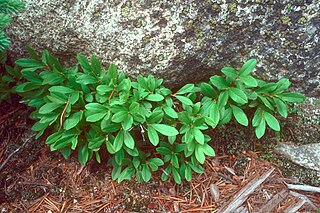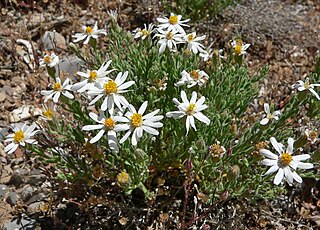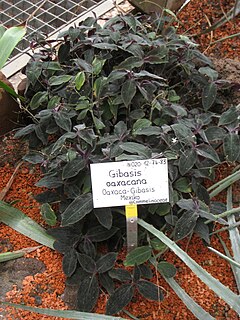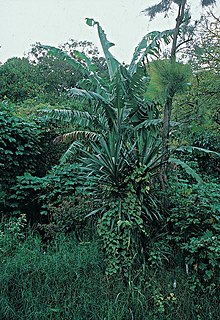
Sebastiania is a genus of flowering plants in the family Euphorbiaceae first described in 1821. It is native to North and South America from Arizona and the West Indies south to Uruguay.

Stephanomeria is a genus of North American plants also known as wirelettuce, belonging to the dandelion tribe within the sunflower family.

Gutierrezia is a genus of flowering plants in the family Asteraceae, native to western North America and western South America. Plants of this genus are known generally as snakeweeds or matchweeds. Some species have been called greasewood. They are annual or perennial plants or subshrubs with yellow or white flowers.

Chaenactis is a genus of plants in the daisy family which are known generally as pincushions or dustymaidens.

Vaccinium cespitosum, known as the dwarf bilberry, dwarf blueberry, or dwarf huckleberry, is a species of flowering shrub in the genus Vaccinium, which includes blueberries, huckleberries, and cranberries.

Chaetopappa is a genus of plants in the daisy family which are known generally as leastdaisies.
Adenopappus is a genus of plants in the family Asteraceae described as a genus in 1840.
Geissolepis is a genus of flowering plants in the daisy family.
Greenmaniella is a genus of flowering plants in the daisy family.
Pippenalia is a genus of Mexican plants in the groundsel tribe within the sunflower family.
Chromolepis is a genus of flowering plants in the sunflower family.
Clappia suaedifolia is the sole species in the North American genus of flowering plants in the daisy family, Clappia.

Fernaldia is a genus of flowering plants in the family Apocynaceae, first described as a genus in 1932. It is native to Mexico and Central America.

Gibasis oaxacana is species of flowering plants within the Gibasis genus, first described in 1972. It is endemic to the State of Oaxaca in southern Mexico.

Yucca lacandonica is a plant species in the yucca genus with the common name "tropical yucca." It is native to Belize and to southern Mexico, the states of Chiapas, Veracruz, Tabasco, Quintana Roo, Campeche, and Yucatán. It is uniquely the only epiphytic species in the genus, although it has been reported to grow terrestrially as well.
Agave gracilipes, common names Maguey de pastizal or slimfoot century plant, is a plant species native to western Texas, southern New Mexico and Chihuahua. It is found in grasslands, desert scrub and open pinyon-juniper woodlands at elevations of 1,200 to 1,900 m.
Ephedra pedunculata, common name Clap-weed, vine Mormon tea or Comida de Vívora, is a plant species native to southern Texas and to Mexico as far south as Zacatecas. It grows in sandy or rocky slopes and outcrops.

Parietaria floridana, common name Florida pellitory, is a plant species native to the southeastern United States, the West Indies, and much of Latin America. In the US, the heart of its range extends from Florida, to Georgia and North and South Carolina, with isolated populations reported in Mississippi, Louisiana, Texas, New Hampshire, Kentucky and Delaware. Some populations in California have in the past been referred to as P. floridana but are now regarded as a separate species, P. hespera.
Leuciva, is a North American genus of plants in the sunflower family.
Hedosyne is a genus of plants in the sunflower family.









